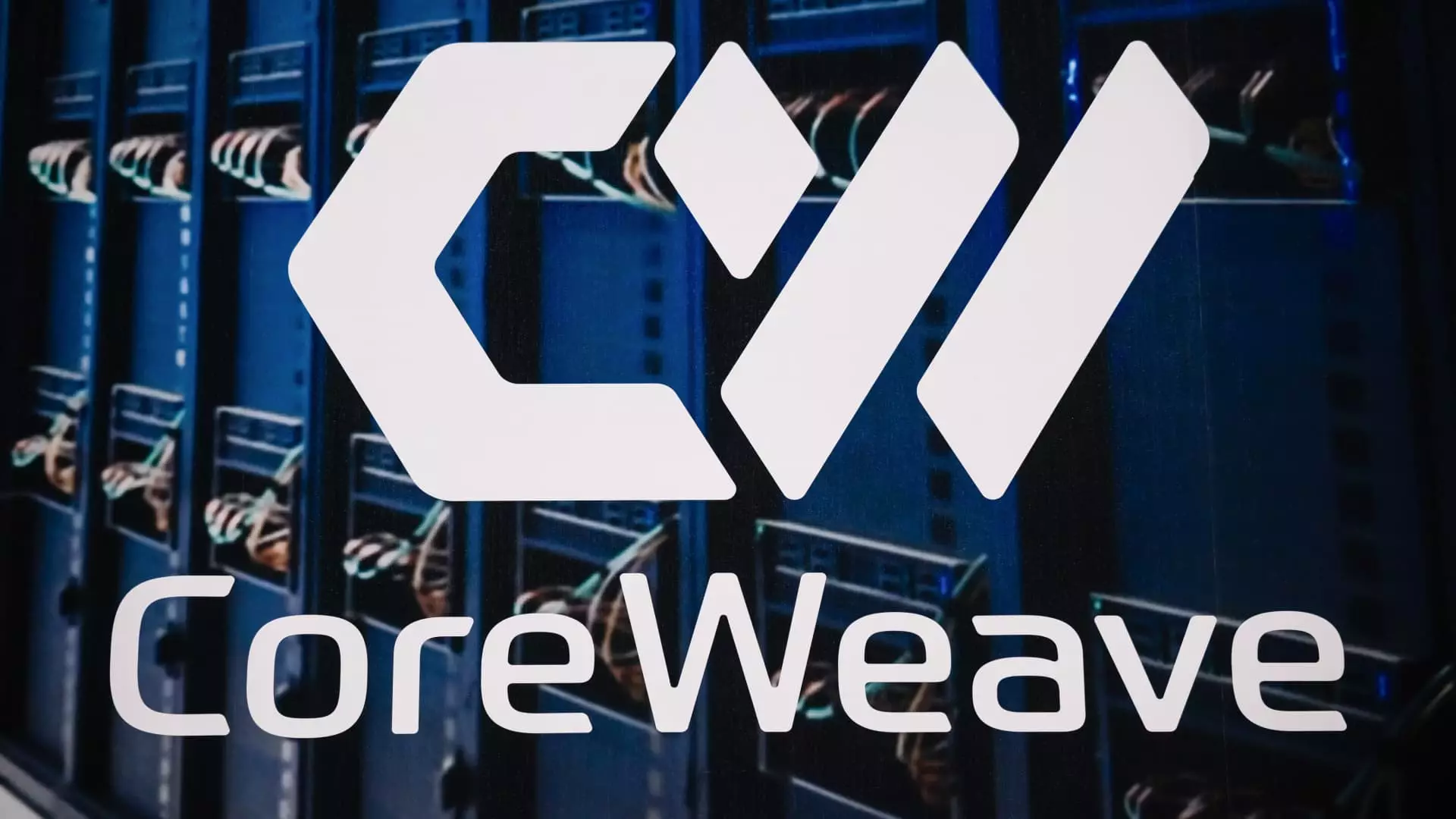In the rapidly evolving landscape of cloud infrastructure, few players stand out as vividly as CoreWeave, particularly given the recent bullish sentiments from certain analysts. Once seen as a niche provider, the company now rides a momentum wave fueled by exponential demand for artificial intelligence (AI) workloads. The recent upgrade by Citizens JMP Securities reflects an underlying confidence in CoreWeave’s strategic positioning, yet a closer examination exposes both its immense potential and the perilous ground on which its valuation teeters. For the center-right investor with a keen eye, CoreWeave epitomizes the classic balancing act: leverage innovative prospects while remaining cautious of long-term fragility.
This optimism surged when the company announced a significant $6.3 billion purchase order from Nvidia, a titan of semiconductors powering AI infrastructure worldwide. Such a deal isn’t merely a contractual milestone; it signals a broader shift toward hyperscalers outsourcing GPU deployment en masse. Investors need to understand that this shift points toward a fundamental transformation in the industry—a move away from in-house hardware towards cloud-based GPU as a service (GPUaaS). But this transition, while promising, is riddled with risks attributable to long-term dependency, rapid technological obsolescence, and the volatile nature of market exuberance.
The Illusion of Sustainable Growth Amid Short-Term Optimism
Despite the surge—over 20% in just a month—many analysts remain skeptical, rating CoreWeave inadequately or simply holding. This divergence of opinion underscores a critical reality: the market has yet to fully grasp the scope and sustainability of the company’s revenue model. Most of the skepticism hinges on the company’s murky profit margins and the uncertain longevity of its current growth trajectory. Every bullish outlook must contend with the possibility that this spike in demand is a transient phenomenon, driven by a temporary frenzy rather than a solid foundation.
From a center-right perspective, this is where rational skepticism should take precedence. It’s one thing to capitalize on explosive demand; it’s another to bet on perpetual growth without acknowledging the underlying vulnerabilities. Companies like CoreWeave, operating within a technological arms race, risk becoming hostage to supplier cycles, geopolitical tensions, or technological shifts that could render current GPU architectures obsolete in a matter of years. History teaches us that overinvestment in such nascent sectors often leads to sharp corrections once the market recalibrates itself.
Furthermore, the company’s business model relies heavily on long-term contracts with hyperscalers—most notably, the rising trend of cluster leasing. While this inflates near-term revenue figures, it also exposes the firm to counterparty risk. Should major clients like Nvidia or Microsoft unexpectedly alter their AI deployment strategies, CoreWeave’s financial outlook could rapidly deteriorate. This long-term dependency complicates valuation, making the optimistic projections of a $300 billion GPUaaS market by 2030 speculative at best.
The Industry’s Big Gamble and the Perils of Overconfidence
The sector’s underlying premise hinges on the continued dominance of GPUs for AI. Yet, this techno-reliance invites significant vulnerability. Technological breakthroughs, such as quantum computing or alternative processing methods, could dramatically reshape the landscape within a few years. For now, the market seems disproportionately captivated by shiny growth figures, often neglecting the structural challenges lurking beneath.
From a pragmatic standpoint, government policies—especially in regions wary of overdependence on American technology giants—could impose restrictions that stifle growth. The global geopolitical climate, competitive pressures from other nations developing their own AI infrastructure, and the risk of overheating in the cloud sector all suggest a future where euphoria might give way to reevaluation.
Despite these risks, it’s undeniable that CoreWeave’s current position offers a window of opportunity for investors who understand the inherent volatility and long-term uncertainty. For the center-right investor, it symbolizes the allure of technological mastery intertwined with the necessity for disciplined valuation. The company’s strength lies in its ability to leverage its strategic partnerships and supply-demand dynamics—yet the danger lies in blindly trusting this momentum without acknowledging the explosive growth could lead to a bubble. This is a quintessential case of high risk, high reward, where pragmatic optimism must be tempered with vigilant skepticism.

